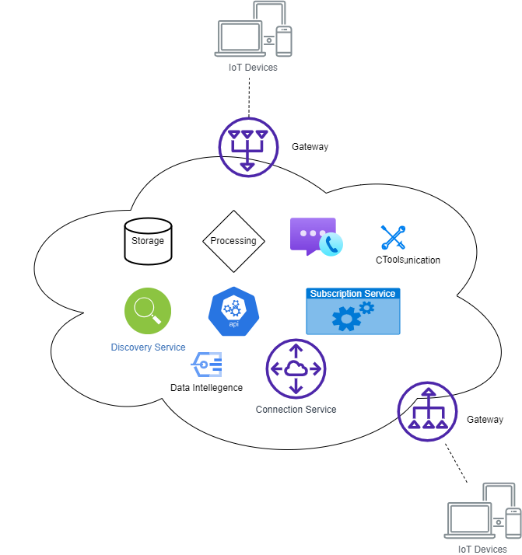Cloud Computing for Effective Cyber Security Attack Detection in Smart Cities
Main Article Content
Abstract
An astute metropolis is an urbanized region that accumulates data through diverse numerical and experiential understanding. Cloud-connected Internet of Things (IoT) solutions have the potential to aid intelligent cities in collecting data from inhabitants, devices, residences, and alternative origins. The monitoring and administration of carrying systems, plug-in services, reserve managing, H2O resource schemes, excess managing, illegal finding, safety actions, ability, numeral collection, healthcare abilities, and extra openings all make use of the processing and analysis of this data. This study aims to improve the security of smart cities by detecting attacks using algorithms drawn from the UNSW-NB15 and CICIDS2017 datasets and to create advanced strategies for identifying and justifying cyber threats in the context of smart cities by leveraging real-world network traffic data from UNSW-NB15 and labelled attack actions from CICIDS2017. The research aims to underwrite the development of more effective intrusion detection systems tailored to the unique problems of safeguarding networked urban environments, hence improving the flexibility and safety of smart cities by estimating these datasets.
Article Details
References
R. O. Andrade, S. G. Yoo, L. Tello-Oquendo, and I. Ortiz-Garces, “A Comprehensive Study of the IoT Cybersecurity in Smart Cities,” IEEE Access, vol. 8, 2020, doi: 10.1109/ACCESS.2020.3046442.
S. Gore et al. “Innovations in Smart City Water Supply Systems,” Int. J. Intell. Syst. Appl. Eng., vol. 11, no. 9s, pp. 277–281, Jul. 2023, Accessed: Aug. 18, 2023. [Online]. Available: https://www.ijisae.org/index.php/IJISAE/article/view/3118
M. Tholkapiyan, S. Ramadass, J. Seetha, A. Ravuri, S. S. S, and S. Gore, “INTELLIGENT SYSTEMS AND APPLICATIONS IN Examining the Impacts of Climate Variability on Agricultural Phenology?: A Comprehensive Approach Integrating Geoinformatics , Satellite Agrometeorology , and Artificial Intelligence,” vol. 11, pp. 592–598, 2023, Accessed: Aug. 18, 2023. [Online]. Available: https://ijisae.org/index.php/IJISAE/article/view/2891
Liu, C. Qian, W. G. Hatcher, H. Xu, W. Liao, and W. Yu, “Secure Internet of Things (IoT)-Based Smart-World Critical Infrastructures: Survey, Case Study and Research Opportunities,” IEEE Access, vol. 7, pp. 79523–79544, 2019, doi: 10.1109/ACCESS.2019.2920763.
S. Aguiar et al., “Grape bunch detection at different growth stages using deep learning quantized models,” Agronomy, vol. 11, no. 9, Sep. 2021, doi: 10.3390/agronomy11091890.
R. A. Hamid, N. S. Khalid, N. A. Abdullah, N. H. A. Rahman, and C. C. Wen, “Android Malware Classification Using K-Means Clustering Algorithm,” IOP Conf. Ser. Mater. Sci. Eng., vol. 226, no. 1, 2017, doi: 10.1088/1757-899X/226/1/012105.
Y. Zhou, G. Cheng, S. Jiang, and M. Dai, “Building an efficient intrusion detection system based on feature selection and ensemble classifier,” Comput. Networks, vol. 174, 2020, doi: 10.1016/j.comnet.2020.107247.
A. Diro and N. Chilamkurti, “Distributed attack detection scheme using deep learning approach for Internet of Things,” Futur. Gener. Comput. Syst., vol. 82, pp. 761–768, 2018, doi: 10.1016/j.future.2017.08.043.
M. Tavallaee, E. Bagheri, W. Lu, and A. A. Ghorbani, “A detailed analysis of the KDD CUP 99 data set,” in IEEE Symposium on Computational Intelligence for Security and Defense Applications, CISDA 2009, 2009. doi: 10.1109/CISDA.2009.5356528.
S. Liu and M. Whitty, “Automatic grape bunch detection in vineyards with an SVM classifier,” J. Appl. Log., vol. 13, no. 4, pp. 643–653, 2015, doi: 10.1016/j.jal.2015.06.001.
Rovira-Sugranes, A. Razi, F. Afghah, and J. Chakareski, “A review of AI-enabled routing protocols for UAV networks: Trends, challenges, and future outlook,” Ad Hoc Networks, vol. 130, no. 2008784, p. 102790, 2022, doi: 10.1016/j.adhoc.2022.102790.
M. M. Rashid, J. Kamruzzaman, M. M. Hassan, T. Imam, and S. Gordon, “Cyberattacks Detection in IoT-Based Smart City Applications Using Machine Learning Techniques,” Int. J. Environ. Res. Public Heal. 2020, Vol. 17, Page 9347, vol. 17, no. 24, p. 9347, Dec. 2020, doi: 10.3390/IJERPH17249347.
Kakderi, N. Komninos, and P. Tsarchopoulos, “Smart cities and cloud computing: lessons from the STORM CLOUDS experiment,” J. Smart Cities, vol. 2, no. 1, pp. 3–13, 2016, doi: 10.18063/jsc.2016.01.002.
P. Su, Y. Chen, and M. Lu, “Smart city information processing under internet of things and cloud computing,” J. Supercomput., vol. 78, no. 3, pp. 3676–3695, 2022, doi: 10.1007/s11227-021-03972-5.
R. Andrade, J. Torres, and L. Tello-Oquendo, “Cognitive security tasks using big data tools,” Proc. - 2018 Int. Conf. Comput. Sci. Comput. Intell. CSCI 2018, no. December, pp. 100–105, 2018, doi: 10.1109/CSCI46756.2018.00026.

